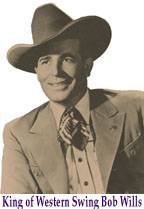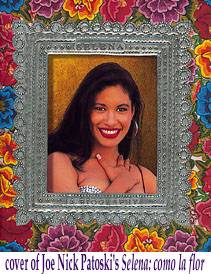


FEBRUARY 1—JULY 31, 2000
CROSSROADS OF CULTURE: Texas Music Frontiers
SOUTHWESTERN WRITERS COLLECTION
Opening in conjunction with the inauguration of Texas State's Institute for the History of Texas Music, the Southwestern Writers Collection announces a new exhibition:
Highlighting the Texas Music Archives of the Southwestern Writers Collection, Crossroads of Culture: Texas Music Frontiers traces how the interplay of cultures created our state's signature sounds: Western Swing, Country, Rhythm and Blues, Conjunto and Tejano.
 Texas is home to a rich array of cultures, each of which has drawn inspiration from the others in creating vibrant forms of contemporary Texas music.
Texas is home to a rich array of cultures, each of which has drawn inspiration from the others in creating vibrant forms of contemporary Texas music.
Display items include a Bob Wills' hat and fiddle, a songbook created by Willie Nelson as a youngster, selections from Joe Nick Patoski's biographical research into Selena and Stevie Ray Vaughan, and numerous other items that shed light on Texas music.
Western Swing, popularized by Bob Wills and His Texas Playboys in the 1930s, melded the Southern fiddle music of Wills' forebears with a wide variety of sounds, especially jazz, blues, mariachi and polka, creating a lively dance music that still has appeal today.
During the 1970s, Austin was the center of a revolution in Country music, as Willie Nelson, Jerry Jeff Walker and others blended country with rock and roll and blues and redefined the music industry in their own terms. This "outlaw" movement brought together the previously disparate "hippie" and "redneck" cultures, creating the matrix for Austin's eventual emergence as a leading music center in the United States.
Blues music has had arguably the strongest cross-cultural influence and is clearly heard in everything from country to rock and roll to Tejano. Texas's African Americans pioneered the use of the electric guitar and the "Texas Style," enabling the guitar to emerge as the dominant instrument of American popular music.
German, Czech, and Polish immigrants introduced the polka and accordion to the state in the mid 1800s, and Texas Mexicans reworked the sound to create a vibrant Conjunto music. While this roots-oriented sound continues to be played, Texas Mexican music began to evolve in the years after World War II as people moved off the farms to the cities and absorbed new cultural influences. The current music, called Tejano, incorporates native Texan elements such as blues, country, and rock and roll while also looking to the Caribbean for inspiration.
As the musical styles of our state continue to blend, a distinctive and original Texas sound is evolving. Infused with English/Spanish lyrics, blues guitars, conjunto accordions, and country stylings, it represents the frontiers of new Texas music.
Crossroads of Culture: Texas Music Frontiers was curated by Steve Davis, Assistant Curator of the Southwestern Writers Collection.
- Facebook
- Twitter
- Instagram
- Youtube
Email List